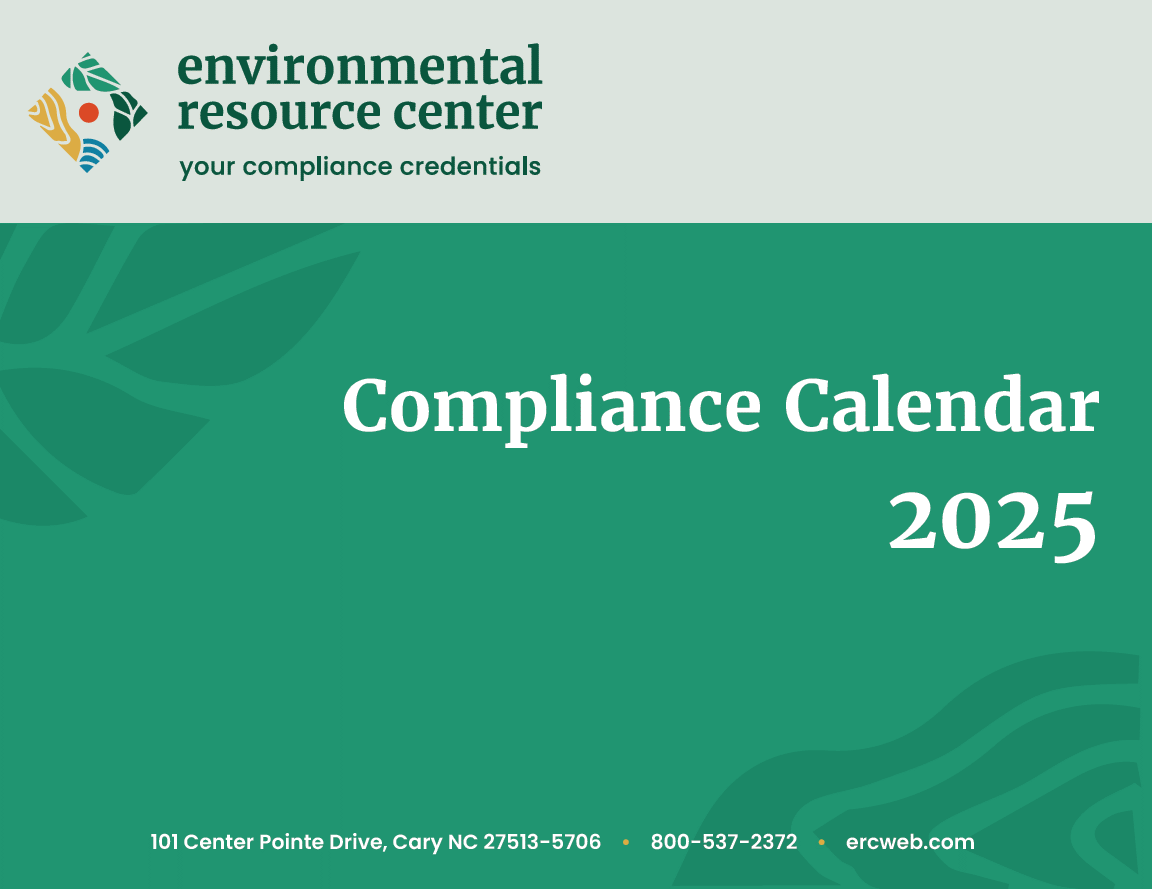 EPA announced that it had designated five more chemicals as high-priority substances that will undergo risk evaluations under the Toxic Substances Control Act. The chemicals are all known or probable carcinogens: acetaldehyde, acrylonitrile, benzenamine, 4,4’-methylene bis(2-chloroaniline) or MBOCA, and vinyl chloride. EPA also announced that it has selected five more chemicals to determine whether the agency should perform risk evaluations for them: benzene, ethylbenzene, naphthalene, styrene, and 4-tert-octylphenol.
EPA announced that it had designated five more chemicals as high-priority substances that will undergo risk evaluations under the Toxic Substances Control Act. The chemicals are all known or probable carcinogens: acetaldehyde, acrylonitrile, benzenamine, 4,4’-methylene bis(2-chloroaniline) or MBOCA, and vinyl chloride. EPA also announced that it has selected five more chemicals to determine whether the agency should perform risk evaluations for them: benzene, ethylbenzene, naphthalene, styrene, and 4-tert-octylphenol.Vinyl chloride, one of the substances to undergo risk evaluation, made headlines in February 2023 as one of several hazardous substances that first responders vented from derailed train cars near East Palestine, Ohio. The chemical, a known carcinogen, is primarily used in the manufacturing of plastics such as polyvinyl chloride. According to EPA, concerns over the health effects of vinyl chloride prompted Congress to promulgate the original TSCA in 1974.
Acetaldehyde is mainly used in manufacturing and processing adhesives, petrochemicals, and other chemicals, and in intermediates for products like packaging and construction materials. Acetaldehyde exposure may cause respiratory irritation. Exposure to acrylonitrile, which is used to process plastics, paints, petrochemicals, and other chemicals, is also associated with respiratory irritation. Benzenamine exposure may affect the blood, fetal development, and reproduction, and the chemical is used to manufacture and process dyes and pigments, petrochemicals, plastics, resins, and other chemicals. The substance MBOCA is used in the manufacturing and processing of rubbers, plastics, resins, and other chemicals. EPA states that there is “extensive evidence” showing that exposure to MBOCA may damage genetic material in cells and lead to other adverse health effects, especially in infants and children.
On Dec. 31, 2024, EPA released for public comment a preliminary list of manufacturers and importers that may be subject to fees for the five chemicals newly designated as high-priority substances. This and other supporting documents may be accessed in the docket EPA-HQ-OPPT-2024-0501 at Regulations.gov.
Of the five additional chemicals selected for potential prioritization under TSCA, benzene is a known carcinogen that causes leukemia, as well as immune system effects and developmental abnormalities. Ethylbenzene, naphthalene, and styrene are probable carcinogens also associated with various health effects, and 4-tert-octylphenol is linked with kidney inflammation and impaired fertility. All five substances are used in a range of manufacturing and processing applications.
EPA’s statutory prioritization process is expected to take nine to 12 months and will end when the agency determines whether the chemicals in question present an unreasonable risk to human health or the environment. If so, the agency must immediately begin the risk management process. In the past year, EPA has streamlined the prioritization process by updating its technology, implementing recommendations from the Science Advisory Committee on Chemicals, and making more information on the chemicals of concern publicly available earlier in the process. The agency has opened a public comment period ending March 18, 2025. The dockets for each of the chemicals being considered for prioritization can be accessed through EPA’s website.
 The growth of the electronic waste recycling industry “raises challenges related to workers’ health” in part due to risks from occupational exposure to mercury, according to a report published by CDC in January. Workers in this industry can be exposed to mercury through the inhalation of mercury vapor and mercury-containing dust. The CDC report focuses on the results of a NIOSH health hazard evaluation of an electronics waste and lamp recycling facility in Ohio that found levels exceeding the ACGIH Biological Exposure Index (BEI) of inorganic mercury in urine among six of 14 workers, one of whom worked outside the lamp recycling area. (ACGIH’s BEI is 20 μg/g creatinine.) Environmental air sampling found mercury in all direct area air samples, including those from “nonproduction areas” like a conference room and material storage area, with some samples exceeding the ACGIH Threshold Limit Value of 25 μg/m3 and the NIOSH recommended exposure limit of 50 μg/m3. One air sample from a production area exceeded OSHA’s permissible exposure limit of 100 μg/m3. These findings show that all workers at these types of facilities, even those who are not directly involved with electronics waste recycling processes, are at risk of exposure to mercury, the report explains.
The growth of the electronic waste recycling industry “raises challenges related to workers’ health” in part due to risks from occupational exposure to mercury, according to a report published by CDC in January. Workers in this industry can be exposed to mercury through the inhalation of mercury vapor and mercury-containing dust. The CDC report focuses on the results of a NIOSH health hazard evaluation of an electronics waste and lamp recycling facility in Ohio that found levels exceeding the ACGIH Biological Exposure Index (BEI) of inorganic mercury in urine among six of 14 workers, one of whom worked outside the lamp recycling area. (ACGIH’s BEI is 20 μg/g creatinine.) Environmental air sampling found mercury in all direct area air samples, including those from “nonproduction areas” like a conference room and material storage area, with some samples exceeding the ACGIH Threshold Limit Value of 25 μg/m3 and the NIOSH recommended exposure limit of 50 μg/m3. One air sample from a production area exceeded OSHA’s permissible exposure limit of 100 μg/m3. These findings show that all workers at these types of facilities, even those who are not directly involved with electronics waste recycling processes, are at risk of exposure to mercury, the report explains.The health hazard evaluation also noted “a disparity in exposure levels among workers with different primary languages and job tenure.” For instance, four of the six workers whose spot urine mercury samples exceeded the ACGIH BEI primarily spoke Spanish, and the median job tenure of workers with elevated mercury levels was eight months. According to the report, the eight workers with mercury levels below ACGIH’s BEI primarily spoke English and had a median job tenure of 23 months. As these findings “[suggest] potential barriers to effective communication and training,” the report urges employers to provide training in workers’ preferred languages.
“Employers at recycling facilities can implement comprehensive exposure mitigation strategies that align with the hierarchy of controls,” CDC’s report continues. “These strategies include enclosing spaces with the highest potential for mercury exposure to prevent contamination of nonproduction areas, improved ventilation, use of appropriate [personal protective equipment], regular exposure surveillance, and training programs tailored to worker needs.”
The report also urges health departments to be aware of the potential for occupational exposure to mercury at electronic waste recycling facilities and recommends that clinicians “remain vigilant for signs and symptoms of mercury toxicity” among patients who work in this industry.
The Training You Need – When You Need It
Learn when it’s convenient for you. Many of Environmental Resource Center’s courses are available in a computer-based training format. Check out our website for a complete list of available courses!
 A final rule published in the Federal Register by the United States Department of Labor in January raised the amounts of civil penalties that apply to MSHA and OSHA citations. The penalty amounts increased by approximately 2.6 percent.
A final rule published in the Federal Register by the United States Department of Labor in January raised the amounts of civil penalties that apply to MSHA and OSHA citations. The penalty amounts increased by approximately 2.6 percent.The increases cover the gamut of OSHA violations, including serious, other-than-serious, willful, repeated, and failure to abate. OSHA state plans are required to maintain penalties that are at least as large as those of federal OSHA. The MSHA penalties whose amounts increased include violations of specific requirements in the Federal Mine Safety and Health Act.
The Labor Department calculated the adjustment based on the percent change in the consumer price index between October 2023 and October 2024. In addition to MSHA and OSHA, the adjustment applies to penalties assessed or enforced by the Employee Benefits Security Administration, the Office of Workers' Compensation Programs, and the Wage and Hour Division.
For more information, view the rule in the Federal Register.
 California’s Office of Environmental Health Hazard Assessment (OEHHA) has added vinyl acetate to its list of chemicals regulated under Proposition 65. Vinyl acetate is used mainly in polymer and copolymer production and as a food additive. The chemical was added to California’s law protecting residents from substances that cause cancer, birth defects, or reproductive harm after the state’s Carcinogen Identification Committee (CIC) determined that vinyl acetate has been “clearly shown to cause cancer.” The Proposition 65 listing of vinyl acetate went into effect on Jan. 3.
California’s Office of Environmental Health Hazard Assessment (OEHHA) has added vinyl acetate to its list of chemicals regulated under Proposition 65. Vinyl acetate is used mainly in polymer and copolymer production and as a food additive. The chemical was added to California’s law protecting residents from substances that cause cancer, birth defects, or reproductive harm after the state’s Carcinogen Identification Committee (CIC) determined that vinyl acetate has been “clearly shown to cause cancer.” The Proposition 65 listing of vinyl acetate went into effect on Jan. 3.According to an OEHHA notice, the 11-member CIC voted unanimously to add vinyl acetate to the Proposition 65 list during a public meeting held in December 2024. The vote followed a summary of the evidence for the chemical’s carcinogenicity presented by OEHHA staff. OEHHA’s hazard identification document on vinyl acetate, published in October 2024, lays out the findings of studies that provide evidence for the agency’s conclusion. Vinyl acetate was classified as “possibly carcinogenic to humans” by the International Agency for Research on Cancer in 1995 and as “suspected of causing cancer” by the European Chemicals Agency in 2011, the hazard identification document notes.
During the same meeting, CIC voted to add 2,2,3-trifluoro-3-(trifluoromethyl)oxirane, also known as hexafluoropropylene oxide or HFPO, to California’s list of chemicals “for which testing is required but has been inadequate,” OEHHA states.
Proposition 65 requires businesses to warn people in California about toxic chemicals in their products, homes, and workplaces or that are released into the environment. Under the law, California must publish and update yearly a list of covered chemicals. Over 900 chemicals have been added to the Proposition 65 list since the law was passed as the Safe Drinking Water and Toxic Enforcement Act of 1986.
 The EPA is currently undergoing the largest wildfire hazardous waste cleanup in the history of the agency as it assists local governments and residents in the wake of catastrophic fires in Los Angeles County. EPA has completed reconnaissance at 6,022 properties. This includes 3,636 properties impacted by the Eaton Fire and 2,386 properties impacted by the Palisades Fire. The agency has successfully removed 80 electric vehicles and bulk energy storage systems, which are extremely dangerous to the public and the environment and will continue ramping up such operations.
The EPA is currently undergoing the largest wildfire hazardous waste cleanup in the history of the agency as it assists local governments and residents in the wake of catastrophic fires in Los Angeles County. EPA has completed reconnaissance at 6,022 properties. This includes 3,636 properties impacted by the Eaton Fire and 2,386 properties impacted by the Palisades Fire. The agency has successfully removed 80 electric vehicles and bulk energy storage systems, which are extremely dangerous to the public and the environment and will continue ramping up such operations.Currently there are 1,050 response personnel in the field, up from 478 at the end of last week and with an additional 280 mobilizing today. EPA is assembling 60 teams to clear hazardous materials from the more than 13,000 residential and 250 commercial fire-impacted properties. EPA has convened a working group to coordinate with utilities, state, local and federal stakeholders to expedite cleanup operations and meet unmet needs in the sector. At the request of water utilities, EPA is also providing technical assistance to help bring systems back online.
“EPA is undertaking the largest wildfire cleanup in the history of the agency. We’re not going to wait days or weeks or months to ramp up. We have over a thousand personnel on the ground to aid Californians, and our local, state, and federal partners, in Los Angeles’s recovery. The Trump administration is tackling this head on in a way that EPA couldn’t possibly be prouder to be a part of,” said EPA Administrator Lee Zeldin.
EPA has been assigned by the Federal Emergency Management Agency (FEMA) with the first stage of the overall recovery and cleanup: the project to remove lithium-ion batteries and to survey, remove, and dispose of hazardous materials from properties burned by wildfires. Residents returning home are encouraged to exercise extreme caution and can call our hotline at 1-833-798-7372 if they encounter a lithium-ion battery while re-entering their property and/or are unsure if a lithium-ion battery was damaged.
On Jan. 24, 2025, President Trump issued Executive Order Emergency Measures to Provide Water Resources in California and Improve Disaster Response in Certain Areas. This directs EPA to complete its hazardous materials mission responding to the Los Angeles wildfires as soon as practical. EPA’s work removing hazardous materials is Phase 1 of the federal cleanup response. This work, conducted at no cost to residents, is a mandatory process to ensure the safety of residents and the workers who will — after the hazardous material is gone — conduct the Phase 2 debris removal in the burn footprints, and to prevent these materials from being released into the environment. Phase 2 will be conducted by the U.S. Army Corps of Engineers, as coordinated by FEMA. Once Phase 1 has been completed at a property, Phase 2 will begin automatically.
EPA will remove potentially dangerous everyday products including household products like paints, cleaning supplies, and automotive oils, garden products such as herbicides and pesticides, batteries, including both standard and rechargeable types, and propane tanks and other pressurized gas containers. They will remove visible asbestos and inspect pressurized fuel cylinders (like propane tanks). After a fire, these products require special handling, especially if their containers are damaged. EPA field teams will also remove items thought to have asbestos if they are easy to identify, but the property will not be fully cleared until Phase 2 (debris removal).
EPA will also remove lithium-ion batteries from vehicles, homes and other products. Many homes have damaged or destroyed lithium-ion batteries, lithium-ion battery energy storage systems, and electric and hybrid vehicles. The batteries should be considered extremely dangerous, even if they look intact. Lithium-ion batteries can spontaneously re-ignite, explode, and emit toxic gases and particulates even after the fire is out.
At the direction of President Trump, EPA is partnering with the U.S. military and Department of Homeland Security to develop and execute a plan to expedite the removal of contaminated and general debris.
If residents are on their property when EPA arrives for the hazardous materials removal, the crew will not be able to conduct work at that property and will return at a later time. EPA will remove only hazardous materials, by hand, and will not remove any non-hazardous materials. If crews find objects of value, EPA will contact local law enforcement to track and remove the objects for safekeeping.
EPA has secured temporary storage, or staging, locations for materials from each fire site. Removed hazardous waste materials are brought into these staging areas daily, processed into appropriate waste streams, and packaged and sealed for shipment and proper disposal.
News Links
Trivia Question of the Week



